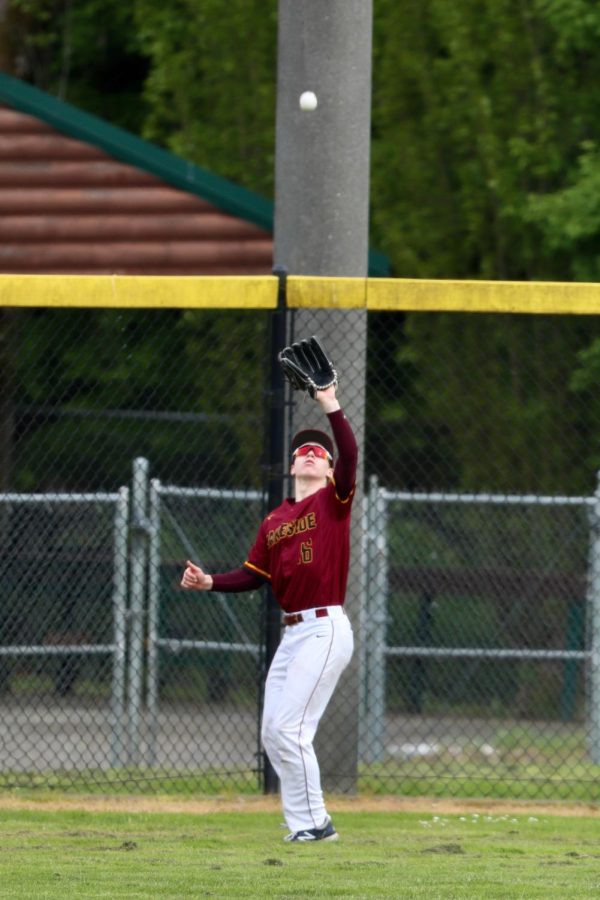Solving Empty Stomachs $3 at a Time
Jack R. ’24 burning calories on the baseball field。
The phrase “$13.70, sleep, study, play, repeat” doesn’t have a ring to it, but it more or less covers the lifestyle of hungry, in-season Lakeside athletes. With rising inflation, a worldwide labor shortage, and supply-chain issues, the hefty lunch price, coupled with medium to small portion sizes, compounds on the fact that on average, athletes need more food than non-athletes. “Everyone’s bodies are different,” Athletic Trainer Carmay says, “but as an active person, you would want to take in more calories than if you’re in your inactive season, because you’re burning more calories and you’re metabolism is a little different.” Indeed, in a poll asking student athletes if they received enough food from Lakeside, only six out of 36 responded “Yes,” while 27 adamantly replied “No.”
Jack R. ’24, a varsity baseball player, explains, “To feel full, I typically have to get two lunches plus snacks — that’s 15 to 20 dollars every day.” Many respondents echoed Jack’s experience, including one who wrote, “I know many athletes that have to purchase two meals — expensive!” One student athlete lamented that “it’s ridiculous that we have to choose between getting enough food and saving money,” while another said, “I usually don’t have enough energy for practice.”
With these concerns on his mind, Jack suggested a system in which in-season student athletes would receive larger portions everyday at lunch. This was based on the theory that in-season athletes, who practice or compete five times a week, can burn more calories per day on average than non-athletes and sometimes even non-school athletes, requiring more food to feel full and compete at a high level. When students were asked about the proposal, although those in favor outnumbered those opposed 22:14, the minority, mainly non-Lakeside athletes and non-athletes who wouldn’t benefit from the proposal, raised questions about possible inequity. In the end, the response, “No, because that would cause chaos” summed up student opinion; while in theory, the system would supply food to athletes who need more, the polarized responses made clear that not all students are on the same page.
Rather than raise portions for just student athletes, many who wrote “no” voiced a desire for the cafeteria to give all students more; in total, eighty percent of students mentioned they would like portions to be raised in some form. However, Director of Food Services Ben Resnick made clear that food prices would not be lowered any time soon nor would portion sizes make dramatic increases. “The issue is that we’re self-operating under Lakeside — we operate with zero money and end with zero money.” That model means that the kitchen has to set prices fixed to their revenue and expenditure, so they are not subject to change. “We have to cover our costs, from the lights to the gas,” he says, “just like a business would.”
Mr. Resnick noted an additional reason for high lunch prices: “If everyone ate here, the prices would come down a little, because we would be getting better buying power, so we’d be getting better prices wholesale,” he says. Incidentally, one student athlete in the poll commented, “I spend every lunch off campus so that I may have access to reasonably priced food which will actually fill my stomach.” Diminished portion sizes ultimately drove him off campus, having a negative impact on his health, energy, and performance. To synthesize, on top of the constraints Mr. Resnick listed, prices are driving students away from the cafeteria, raising prices even higher in turn.
Just as solutions to athletes’ hunger through the cafeteria met dead ends, Director of Athletics Chris Hartley declined proposals within the athletics department. Adding to the department’s pre-existing policy of supplying meals to athletes with competitions after 5:00 p.m., one proposal entailed giving sports teams specified snack budgets, similar to how the cross-country and track teams were given snacks after practice before the athletics department shut them down. Considering the period when these teams were given snacks as case studies, it seems the snacks were not only effective at replenishing calories in a calorie-intensive sport but also popular among team members. Substantiating this, one poll respondent wrote, “For track, they took away our food and a lot of people were bummed about that including me,” she recalled. “This meant that after practice, if I was hungry, I had to buy food at the WCC, spending more money than I wanted to, and if I forgot to get something I was just hungry.” Acknowledging the benefits of these snacks, Mr. Hartley says: “Athletics doesn’t have this unlimited budget, and it’s not our job to make sure kids are getting all of the food they need all day long.”
However, it’s not all bad news for hungry student athletes: Mr. Resnick divulged the option for a $3 side, a previously unknown solution for any student to receive more of the lunch’s protein in a paper cup. How does one get a side? Mr. Resnick says, “If you come through the line and say, ‘Can I get another portion of chicken,’ we’ll give it to you with a little extra charge.” Through extensive field research, it has been confirmed that the side of protein often contains as much protein as the regular lunch, and that the lunch servers are happy to take requests. Hungry students and student-athletes, ditch $13.70 meals in the past; for only $3.00 + $6.85, you can finally feel full again.

